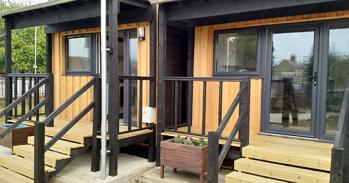
Significant numbers of social tenants in rural areas may have to move away from their friends and communities because of changes to housing benefit criteria, a report reveals today.
Significant numbers of social tenants in rural areas may have to move away from their friends and communities because of changes to housing benefit criteria, a report reveals today.
There is a real danger that rural communities will be less sustainable and less able to support jobs and services.
Mark Shucksmith, Commission for Rural Communities
The study, published by the Commission for Rural Communities (CRC), says that people in rural districts who rent their homes from the local authority or housing associations may be forced away by a number of changes to the way in which benefit is allocated.
In particular, it says that the 2012 Welfare Reform Act, which comes into force next year, has exposed a shortage of smaller properties in rural areas while at the same time cutting benefits from working age social tenants if they are unable to move to smaller homes.
It warns that vulnerable and younger people may be forced to move away from these settlements, even though the provision of affordable rural housing is critical to ensure that young people growing up in rural areas are able to remain in their communities.
The report, Rural Housing at a time of economic change, was produced by the Centre for Housing and Planning Research at the University of Cambridge on behalf of the CRC. It is being made available for free download at https://www.gov.uk/government/organisations/commission-for-rural-communities
Anna Clarke, the lead researcher, said: “The changing benefit criteria are likely to lead to increased demand for smaller social rented properties in rural areas. We also found problems with housing quality and fuel poverty in rural areas, and concern over the affordability of the new ‘Affordable Rent’ product, which is largely replacing the construction of new social housing.”
CRC Commissioner, Professor Mark Shucksmith, said: “Changes to benefit eligibility sometimes have unintended consequences. The Commission is concerned that these changes will affect vulnerable people in rural areas in ways that have not been anticipated and will lead younger people to move out of small rural settlements.”
“Other people, too, may lose benefit unless they move to smaller homes – perhaps away from their friends and communities. There is a real danger that such places will be less sustainable and less able to support jobs and services.”
One of the main findings in the report concerns the stipulation within the 2012 Welfare Reform Act that, from April 2013, social housing tenants of working age will only be able to claim housing benefit for the size of property they are deemed to need. Those considered to be “under-occupying” their home will be subject to a reduction of 14% of their benefit if they have one spare room, and 25% if they have two or more, forcing them to search for smaller accommodation.
But the researchers found that in rural areas, not enough smaller accommodation exists. This may force people to choose between losing benefit, or moving away from their friends and communities, often to urban areas where such properties are more common.
In addition, a higher proportion of households underoccupy in rural districts, partly because social landlords often house small or young families in larger accommodation, so that if their family grows they do not have to move on.
Now it seems that many may have to do so anyway. The report points out that there is an “acute shortage” of one-bedroomed properties nationally, but that it is worst rural areas, which typically have fewer flats. The scarcity of such property means that many social tenants could be uprooted.
The study also found that homes in rural areas are substantially more likely to fail to meet the decent home standard, especially in the private rented sector. They also have much higher rates of thermal inefficiency, with 56% of private rented homes in hamlets or isolated dwellings falling into the lowest category under the Standard Assessment Procedure – the Government measure used to assess the energy ratings of dwellings. “With rising fuel prices and falling incomes and benefit levels, this raises real concerns over fuel poverty,” the report adds.
Rural housing is already under considerable strain. According to recent estimates by the CRC, the population of rural areas is growing faster than urban. The ONS predicts that the rural population will increase by 16% by 2028, compared with a 9% increase in urban areas.
At the same time, affordable housing in rural districts is hard to come by. Rural England has, over the last 30 years, seen the steepest decline in the stock of social rented homes. In 1980, 25% of the housing stock in rural areas was social housing compared with 36% in urban areas. By 2007, those figures had decline to 13% and 21% respectively. The gap between average rural house prices and cheaper, urban homes is also widening.
The findings of the report will be circulated to key Government agencies including the Department for the Environment, Food and Rural Affairs. Full details can be downloaded from the CRC website: https://www.gov.uk/government/organisations/commission-for-rural-communities
This work is licensed under a Creative Commons Licence. If you use this content on your site please link back to this page.





